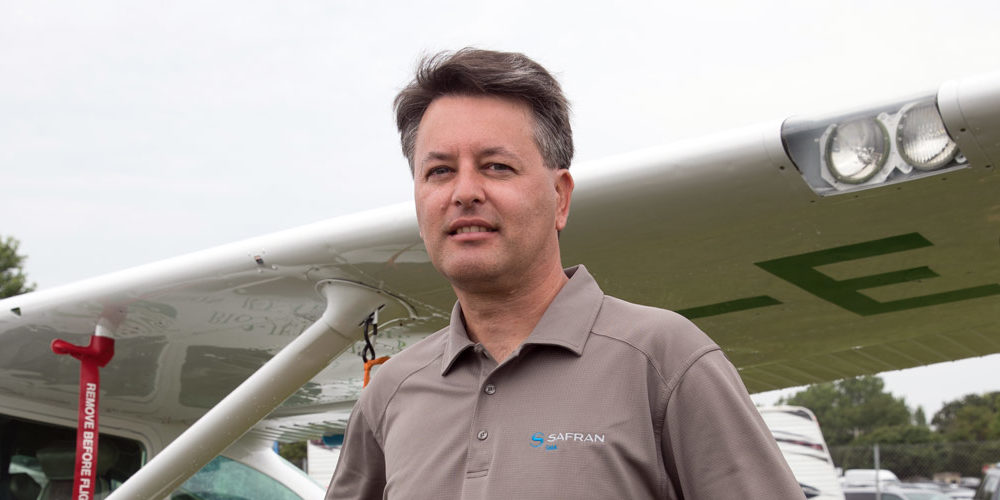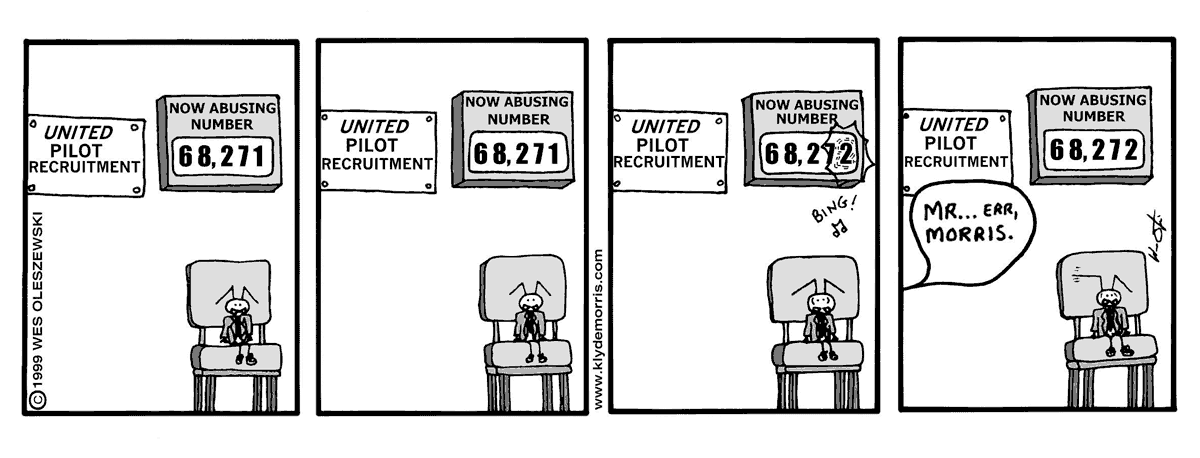When Thierry Saint Loup (’99, DB) enrolled at Embry-Riddle’s Daytona Beach Campus, his sights were set on becoming a corporate pilot. He would soon discover he was destined for that and more — including a role in developing the university’s Eagle Flight Research Center (EFRC) and an engine that would power his world record-setting flight in 2016.
An Unexpected Detour
In 1998, Peter S. Pierpont, then head of the engineering department at Embry-Riddle, received a call from a French company called SMA asking if the university would be interested in a research project involving a jet-fuel-burning piston engine for aircraft. The super-efficient engine had been developed by SMA with the help of some heavy hitters — including the Formula 1 engineering team from Renault Sport — but this project would mark the first time it was tested outside the company’s factory. SMA needed research to back its application on a variety of aircraft, including the development of a supplemental type certificate (STC) in the United States.
At the time, “engineering was not expected to be part of my career path,” recalls Saint Loup. “I wanted to be a pilot.” The French-born student had already earned his single-engine commercial pilot’s certificate in Clearwater, Florida, before enrolling at Embry-Riddle, where he focused on earning his airframe and powerplant certification, as well as multi-engine and instrument ratings. He was also president of the aerobatic club, of which Pierpont was the faculty adviser.
“One day I was in his office, talking about a project for the club, and he said, ‘Hey, Thierry — you’re French, you have a pilot certificate, you’re working on your A&P … I think you could be a good candidate to work on this new project.’ I said, ‘Why not?’”
Saint Loup was joined by Richard “Pat” Anderson, a professor of aerospace engineering at Embry-Riddle, and the project ended up being the genesis of the Eagle Flight Research Center (EFRC) at the university.
The team built and tested the engine and demonstrated its capabilities on Capitol Hill, at the Pentagon and at the Experimental Aircraft Association’s AirVenture in Oshkosh, Wisconsin, Saint Loup says.
“That was a start-up, blazing new ground,” says Anderson, now the director at EFRC. “We were biting off something that was truly different, combining engineering and aviation. And Thierry was in a particularly unique position — helping flight-test the aircraft, but also interfacing with the client because he spoke French.”
Setting a New Record
Before the STC for the engine could be completed, though, the project returned to its home base — followed shortly thereafter by Saint Loup, who earned his bachelor’s degree in aviation technology in 1999.
“In 2000, because of all the knowledge and experience I had acquired working on the program at the university, I was hired by SMA,” he says. “I ended up writing the engine installation manual, and the FAA approved the 230 HP engine installation on the Cessna 182 in 2006. We started doing engine conversions in the United States and the rest of the world.”
Fast forward to 2016, when Saint Loup was contacted by Ross McCurdy, a high school science teacher and pilot who hoped to be the first to complete a coast-to-coast flight powered by bio-jet fuel. After verifying the compatibility of the fuel with the engine specifications to meet FAA requirements, Saint Loup joined McCurdy for the western portion of the flight from Grand Prairie, Texas, to Santa Monica, California, and back.
“It dawned on me that maybe we could set a world record for efficiency along the way. It was a record I meant to get since it was established by the Fédération Aéronautique Internationale (FAI) in 2008. The FAI, the world’s governing body for air sports, already listed records for speed, distance, altitude and payload, but it only recently had developed the category of efficiency,” Saint Loup says. “Unfortunately, only a triangular course would qualify for the world record, so Ross and I decided to plan another flight to make history.”
On July 12, 2016, the pair flew a Cessna 182 from Caldwell, New Jersey, to Buffalo, New York, then to Portland, Maine, before returning to Caldwell. Distance: 848 nautical miles. Flight time: 9.1 hours. Fuel used: 56 gallons — or 6.18 gallons per hour, compared to a typical engine’s 8 to 10 gallons per hour range. The flight set the first world record for aeroplane efficiency in the C-1-c class.
“A slight mistake or a bad GPS recording and we would have failed,” Saint Loup says. “But everything lined up beautifully — from the weather to the air traffic controllers to the aircraft to the ground support team and recording equipment.”
Looking Into the Future
Saint Loup’s company continues to improve the efficiency and reliability of aircraft with engines based on compression-ignition technology. An engine version of 330 to 400 HP is in development next. SMA also developed a modular high power density engine that offers record-breaking power output for hybrid applications, as well as the pure generation of electricity in larger commercial aircraft.
Saint Loup says his Embry-Riddle education has helped guide the forward momentum he’s making as vice president of SMA Engines, a subsidiary of Safran Aircraft Engines, and as director of Safran’s Flight Test Center in San Antonio, Texas. “Embry-Riddle was a cornerstone in my life,” he says. “Had I not attended the school, I’d never have been exposed to the technology that I was. It absolutely changed my life and my future.”


